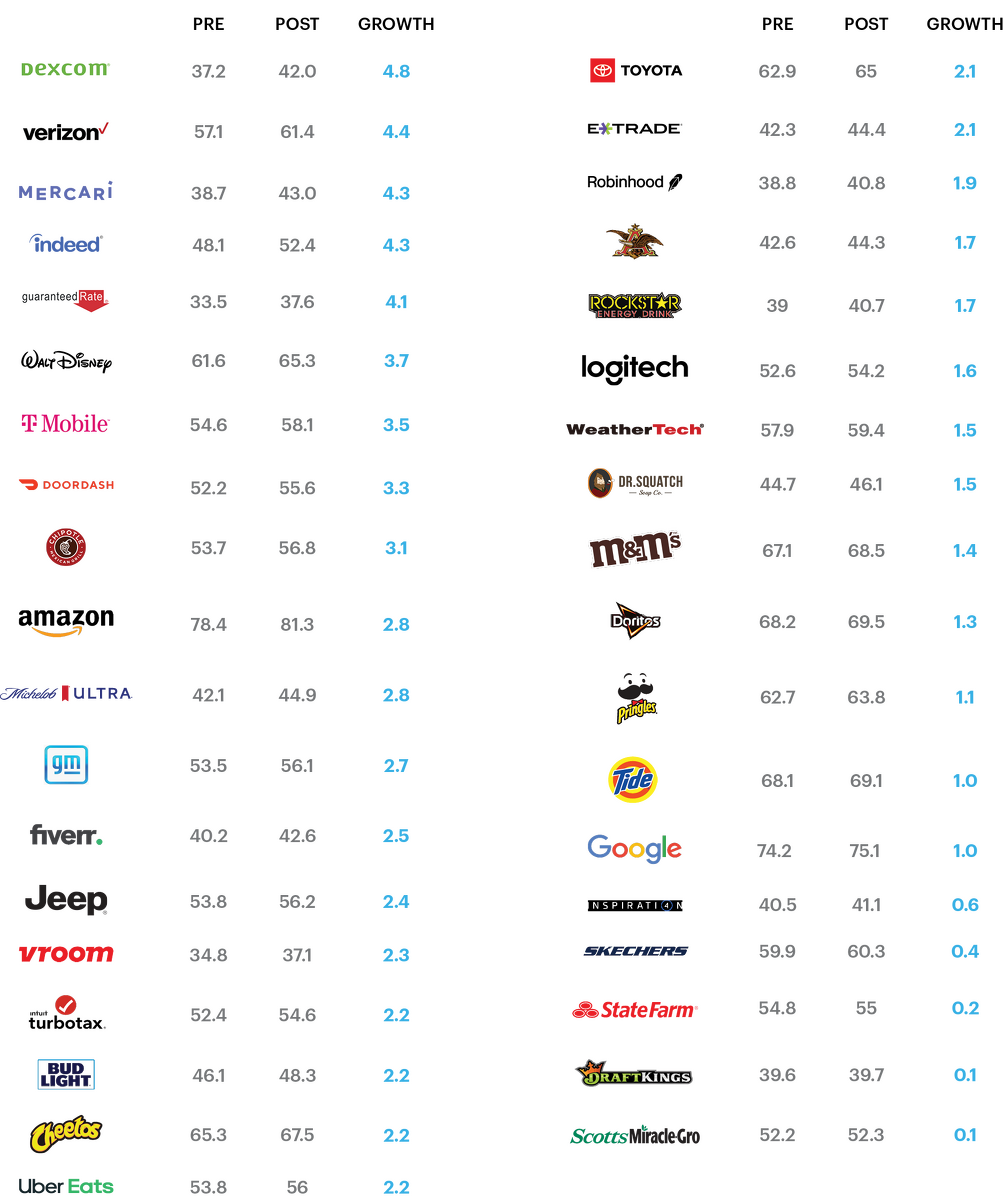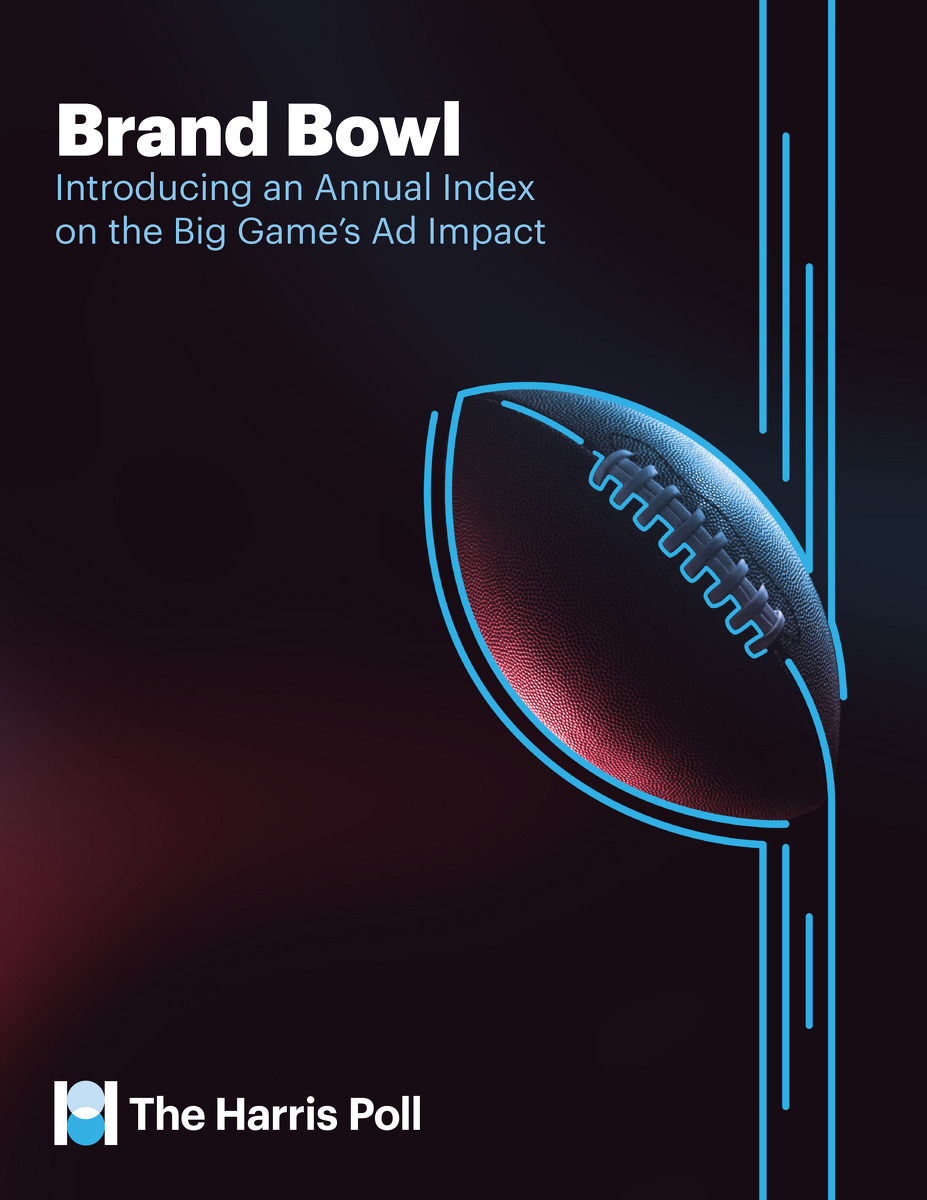Brief • 1 min Read
This index was determined by measuring the growth in brand equity for Super Bowl advertisers this year from February 1-9, 2021.
The Harris Poll’s 2021 Brand Bowl reveals the impact Super Bowl ads (or the lack thereof) had on brand equity for both emerging and established brands. According to our Super Bowl data, most viewers preferred ads that were “funny or clever” (59%). Ads that featured celebrities Americans liked also fared well, with 43% of viewers enjoying these spots, as did commercials that were uplifting (42%).
According to our survey, 70% of Americans claimed to have watched this year’s Super Bowl and 93% of watchers paid attention to the commercials. 82% tuned in on a TV, with 60% using cable or a satellite and 23% streaming. 28% of viewers across all devices used an official stream, compared with 10% who admitted watching on an unofficial one.
Our Brand Bowl Index measures the change in brand equity– the perceived value of a company based on its reputation with its audience — from February 1st to February 9th for companies who confirmed their intent to advertise during the Super Bowl by February 4th, 2021. The goal of this new index is to better understand which brands saw the largest gains in brand equity after the Super Bowl on February 7th, 2021. It then drills down into the four metrics that make up brand equity: momentum, consideration, quality, and familiarity.
This index was determined by measuring the growth in brand equity for Super Bowl advertisers this year from February 1-9, 2021.

Brief • 1 min Read
Brief • 1 min Read
Brief • 1 min Read
Brief • 1 min Read
Brief • 1 min Read
Brief • 1 min Read
Brief • 1 min Read
Brief • 1 min Read

Fill in this form to learn more about the performance of the major advertisers at the 2020 Super Bowl.
The brand equity index survey was conducted online within the United States between February 1-7 among 1,651 adults (aged 18 and over) and February 8-9 among 1,648 adults (aged 18 and over) by The Harris Poll via QuestBrand. Figures for age, sex, race/ethnicity, education, region and household income were weighted where necessary to bring them into line with their actual proportions in the population. Propensity score weighting was used to adjust for respondents’ propensity to be online.
The Super Bowl consumer sentiment survey was conducted online within the United States by The Harris Poll on January 26-27 among 1,073 adults (aged 18 and over) and February 7-9 among 1,109 adults (aged 18 and over. This online survey is not based on a probability sample and therefore no estimate of theoretical sampling error can be calculated. Figures for age, sex, race/ethnicity, education, region and household income were weighted where necessary to bring them into line with their actual proportions in the population. Propensity score weighting was used to adjust for respondents’ propensity to be online.
Subscribe to our newsletter for the latest trends in business, culture, and more.